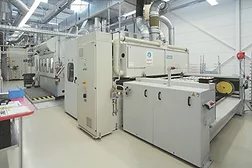Inès A. Melamies
Inès Melamies is a journalist and owner of Blue Rondo International, a consulting company specializing in marketing, public relations and communications. She can be reached at 011.49.2224.989.7588 or info@bluerondo.de.
ARTICLES
Keep the info flowing with our eNewsletters!
Get the latest industry updates tailored your way.
JOIN TODAY!Copyright ©2025. All Rights Reserved BNP Media.
Design, CMS, Hosting & Web Development :: ePublishing


